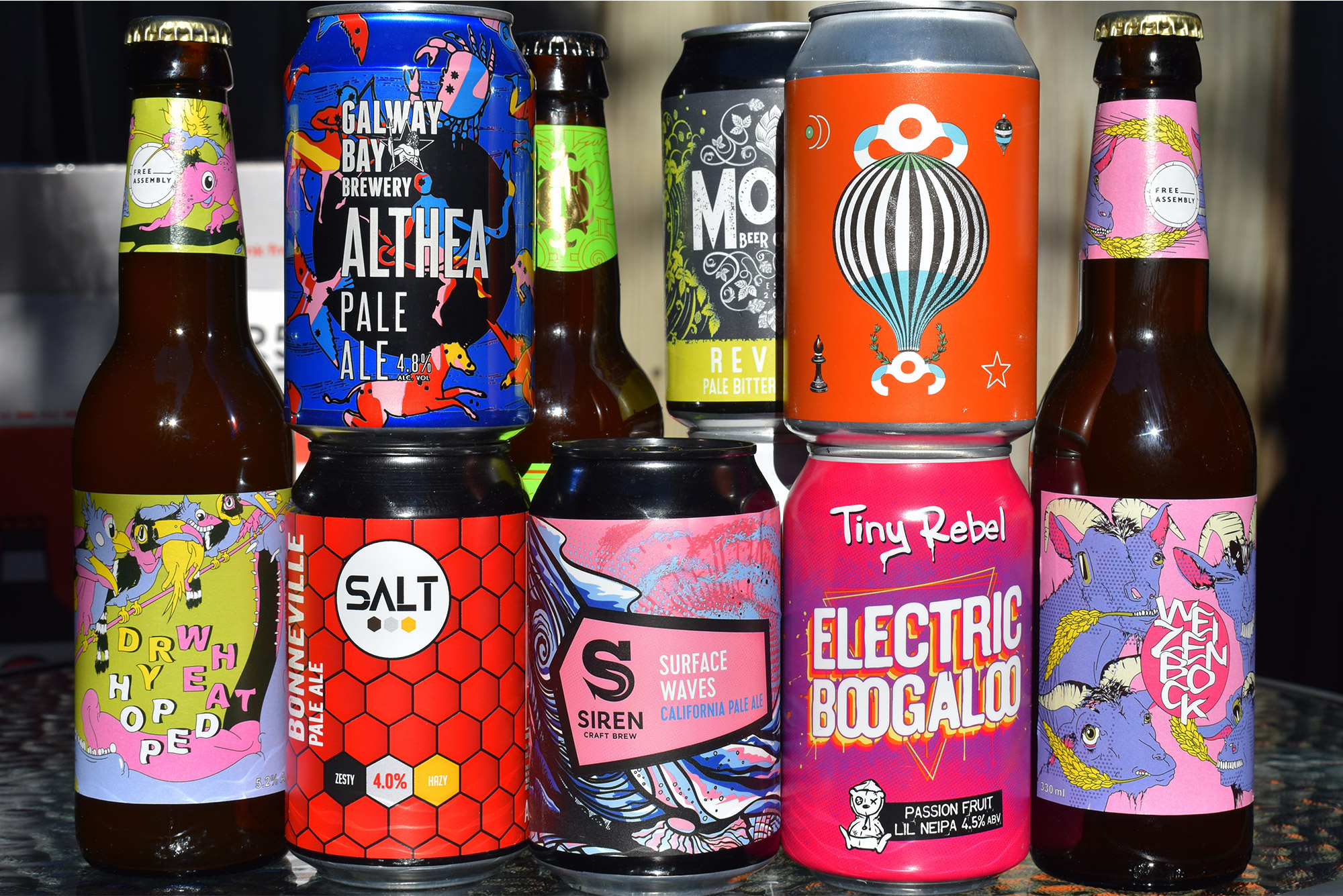
Interview
Keeping within the Codes
The Portman Group is the self-regulatory body for alcohol labelling, packaging and promotion in the UK. James Beeson catches up with CEO Matt Lambert to get his take on marketing best practice.
F
or thirty years, The Portman Group has provided advice, guidance and support to beverage-alcohol brand owners in the UK. It’s not always been plain sailing for the organisation, which has often faced the ire of producers found guilty of breaching its Codes of Practice. As a self-regulatory body, The Portman Group argues its role is to act as an arbitrator – helping producers stay responsible in their marketing efforts, whilst also acting as a voice for producers on the Government’s alcohol policies. Its detractors, however, argue its Codes of Practice stifle creative marketing efforts and that the independent panel that adjudicates on potential breaches has little sympathy for brands wanting to stand out in retail and in on-premise settings.
Just Drinks sat down with the organisation’s new CEO, Matt Lambert, to get the inside track on how the organisation formulates its Codes of Practice, what beverage brand owners’ most common marketing missteps are and the future of alcohol labelling in the UK.
Just Drinks: What is the Portman Group and what does it do?

The Portman Group CEO Matt Lambert: We are the self-regulatory body that oversees marketing in relation to labelling, packaging and sponsorship in the United Kingdom for alcoholic products. We manage an independent complaints panel led by a crown court judge and a group of lay people with different experiences who rule on complaints made by the public. We also provide provides free advice and training to the drinks industry on staying within our Codes of Practice. Additionally, we make the case [to and in Government] for evidence-based alcohol policy.
How does an industry-funded body such as The Portman Group ensure it maintains its transparency, accountability and avoid accusations of bias?
The Portman Group is currently supported by 17 companies in the alcohol industry and the key thing is that the taxpayer doesn’t pay for it. Companies take it seriously and support the process financially but have no influence whatsoever over the decisions of the Panel or on our advice to the industry. We just manage the complaints and deal with the decisions in that sense but we also take the guidance from the Panel and package that into our training for the industry.
Tell us a bit more about the Codes of Practice and how they ensure alcohol brand owners abide by marketing best practice, from a responsibility standpoint?
Essentially, when you boil the Codes right down, it is 12 pieces of advice on good practice, which I regard as common sense. They include things like avoiding appealing to under-18s, avoiding causing widespread offence, making clear your product is alcoholic, trying to avoid encouraging immoderate consumption, or giving the impression that consuming your product will lead to sexual or social success and avoiding implying your product has therapeutic or other health benefits.
Most people in the industry understand these practices pretty well but getting the nuances of that right is where we can help.
Companies have no influence whatsoever over the decisions of the Panel
What happens if a company chooses not to abide by the Codes?
They apply to everyone whether they are paying members and supporters of The Portman Group or not. Everyone has to abide by them. The teeth of the Codes is that, in the rare occasions where the Panel takes a decision and the producer doesn't agree and refuses to comply, we can issue a retail alert bulletin. Most major retailers are signatories and will them withdraw the product from sale within a reasonable period. That is a rare thing because most of the industry is pretty responsible.
Why is it so important alcohol packaging and marketing in the UK is self-regulated, rather than subject to Government legislation?
The value of the self-regulatory element of The Portman Group is that there is an understanding of the needs of the business and that it is flexible and can change to reflect changes in society. It is better that a body which understands business makes these decisions rather than a regulatory body that is part of the Government.
The Portman Group is more intuitive, more understanding and more flexible, whilst also protecting the consumer and coming down hard on companies that don’t abide by the code. I think it is a good balance and a wonderful model that has done an outstanding job for thirty years.
What are the biggest marketing faux pas beverage brand owners make?
Quite a common thing is products with potential appeal to under-18s. We see quite a lot around that. One of the things you can get with – and not naming any products specifically – "edgy" marketing is cartoons or anthropomorphic animals and bright colours that appeal to children or minors more than adults. Now, the guidance is very clear about how you can stay within the Codes whilst still having interesting marketing. It’s not to say you can’t have a cartoon or use interesting colour combinations but there is guidance out there which hopefully shows where that line needs to be drawn.
Craft beers are one of the products often accused of appealing to children because of the bright and colourful designs of their cans. How can brewers maintain their visual identity of their products while avoiding being rapped for appealing to non LDA consumers?
You’ve got to be very careful with the cartoon thing. There have been instances where cartoons have been deemed acceptable on the grounds of being artistic but anything that is clearly child-like and could appeal to minors – large round eyes, that sort of thing – tends to be a problem.
In 2015, the Panel sought expert opinion on marketing elements (such as imagery and colours) and what techniques are typically employed to attract the attention of children. This revealed that marketers often focus on the levels of luminance and contrast levels between colours. Bolder colours with greater contrast tend to gain the attention of children. The Panel has made it clear in past decisions that bright colours alone are not enough to breach the Codes under this rule. It is the overall impression conveyed by a product which will determine compliance.
Where do you draw the line between something appealing to children and something that simply trades off nostalgia? Is that not a bit of a grey area?
A key point to bear in mind for nostalgia-based products is, if the elements appealed to adults when they themselves were teenagers, such elements could still appeal to teenagers today. We would recommend considering whether a nostalgia-based element could still have a strong appeal to children or teenagers today. Has the character/reference been subject to a reboot in recent times and does the image resonate with children more than adults? Sometimes sweets – often ones that are no longer in the market – are evoked in marketing. However, anything that refers to kids’ sweets which are currently on market would be a no-no I would think, for sure.
Hard seltzer has come under fire from The Portman Group recently for not being overt enough about its alcoholic content. What do brand owners need to do in their marketing to ensure they meet your guidelines?
he key thing is about clarity that this is an alcoholic product. It should be clear that we are not talking about a soft drink or fizzy water. One of the things we did was a survey which showed that the concept of “hard” was not widely recognised in the UK market. It is well understood in the US and North America but much less so in the UK.
The concept of “hard” alone, therefore, is not sufficient to convey that this is an alcoholic product. It needs to be clear, preferably on the front of the product, and there should be a number of cues that will lead the consumer to readily understand it is alcoholic.
Functionality is a growing trend in beverages. What pitfalls are there when considering the marketing of a product with added ‘functional’ ingredients such as vitamins, caffeine, CBD etc?
Producers should take care to avoid using words or images that are commonly associated with illicit cannabis use. We issued guidance last year about CBD infused products – there must be no implication that the product could potentially have hallucinogenic effects. They should also avoid making any claims about CBD having benefits for health or wellbeing.
With regards to energy drinks with alcohol, or drinks with vitamins, the key thing is that there must be no indication there is a therapeutic benefit or a health benefit to drinking a product which also contains alcohol. That is very much outside of the Codes. You can indicate the ingredients present in the product – provided the product meets legal requirements – but you mustn’t claim that drinking it will make you healthier.
Is there a danger that we could see stricter rules governing alcohol marketing – akin to those in the tobacco industry – implemented in the UK? What would be The Portman Group’s position on such a move?
I think it is a reasonable fear for some in the industry to have that we might be starting to head in that direction. In the Republic of Ireland – one of our nearest neighbours in Europe – they are about to introduce warnings on labels to state link between alcohol and fatal cancers.
We believe in evidence-based advice, and one of the principles of labelling is that it should be clear, easy to understand and actionable. There is only so much real estate on a label and there is a lot of other information to convey on there about why consumers should choose to spend their money on that particular product. Companies marketing need to be able to explain why their product is better than a rival or competitor. If you clutter the label too much there is evidence the consumer can switch off and doesn’t bother to read it. Simplicity, clarity and visibility are absolutely critical.
The [UK] government and Chief Medical Officer’s advice is that you can have a healthy lifestyle if you stay within 14 units a week. It’s not a cause and effect that if you have one glass of wine you will definitely get cancer. People should enjoy alcoholic products in moderation, treating it with care, and therefore I can’t see why you should have it [cancer labelling].